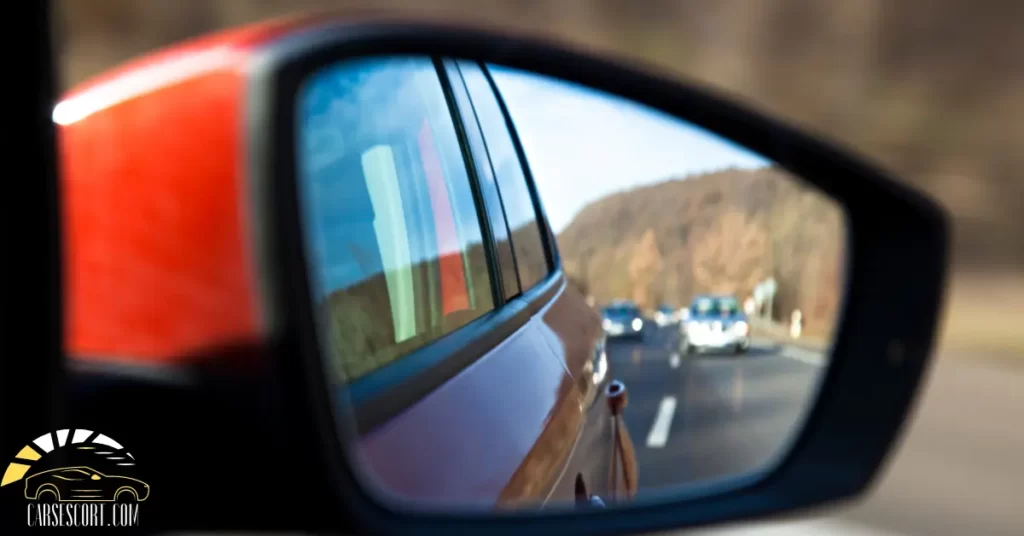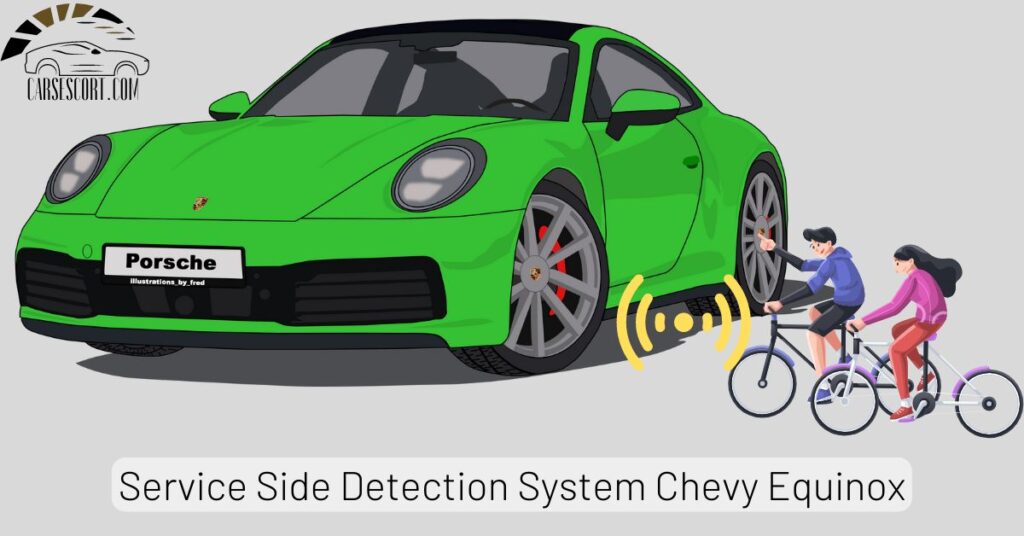The service side detection system in the Chevy Equinox is a blind spot detection system, a crucial safety feature designed to keep drivers aware of their surroundings and prevent potential accidents. By utilizing advanced sensors and alerts, this system can detect the presence of vehicles, cyclists, and pedestrians in the driver’s blind spots and issue a warning to the driver to avoid a collision.
This technology can be particularly helpful in busy urban areas or when driving in heavy traffic, where visibility can be limited. With the side detection system, drivers can have peace of mind knowing they have an extra layer of protection to keep themselves and others on the road safe.
The system can make lane changes and merging safer and more efficient, as drivers can trust that it will alert them to any potential hazards in their blind spots.
How Does Service Side Detection System Chevy Equinox Work?
Chevy Equinox’s service side detection system uses a detection module that includes a combination of sensors and cameras to monitor the area around a vehicle and detect the presence of other vehicles, cyclists, or pedestrians that may be in the driver’s blind spot.
The modern detection system sensors are typically in the side mirrors or the vehicle’s rear bumper. They use radar or sonar technology to detect objects within a certain range.
When an object is detected, the service side detection system of the Chevy Equinox sends a signal to the car’s computer alert the detection system light, which then calculates the object’s speed and distance from the vehicle.
If the object is determined to be in the driver’s blind spot and is approaching the vehicle at high speed, the system will issue an alert to the driver in the form of a visual or audible warning, such as a flashing light or a beeping sound.
Sometimes, the system may also apply the brakes or adjust the steering to help the driver avoid a collision, known as automatic emergency braking or lane-keeping assist. It can be especially useful when the driver is distracted or unable to react quickly enough.

What Causes Side Detection System Problems?
Many factors contribute to side detection system problems, including the following.
1) Dirty or Blocked Sensors
Side detection sensors can become dirty or blocked by snow, ice, or debris, which can cause them to misread the environment around the vehicle. Regular cleaning and maintenance of the sensors can help prevent this issue.
2) Electrical Problems
Like any other electronic system, service side detection system can experience problems with their wiring, connections, or power supply.
Faulty wiring or connections can cause the system to malfunction, while a weak or intermittent power supply can cause it to fail.
3) Sensor Problems
Side detection sensors can be damaged by impacts or accidents, which can cause them to malfunction or fail. Sometimes, the sensors may need to be replaced if they are too damaged to be repaired.
4) Environmental Factors
Certain environmental factors, such as heavy rain or fog, can interfere with the sensors and cause them to produce inaccurate readings.
Bright sunlight or reflections can sometimes cause false alarms or warnings.
5) Software Problems or Calibration Issues
Side detection systems rely on sophisticated software to interpret the sensor data and warn the driver. The system may not work as intended if the software is outdated or incorrectly calibrated.
You May Also Like To Read:
- What Happens If You Don’t Relearn Crankshaft Position Sensor?
- What Causes Carbon Buildup In Exhaust Pipe?
Signs of a Faulty Side Detection System
A side detection system is designed to provide more accurate detection value and alert the driver when a vehicle, cyclist, or pedestrian is in their blind spot. However, like any system in a vehicle, it can develop faults and stop working properly.
Here are some signs that your side detection system may be faulty:
1) Warning Lights on Car Dashboard
One of the most obvious signs of a faulty side detection system is the warning light or indicator light on your dashboard.
If the warning light remains on, it may indicate a problem with the system’s sensors, wiring, or other components.
2) No Warning Sound or Light
Another sign that your side detection system may be faulty is the absence of warning sounds or lights when a vehicle or object is in your blind spot.
3) Delayed Warning System
If there is a delay in the warning sound or light, it may indicate that the system is not functioning properly.
4) False Alarms
If the side detection system issues false warnings alarms, it can be distracting and potentially dangerous for the driver.
The system not activating: If the side detection system is not activating, it may indicate a problem with the control module or wiring.

How to Fix Side Detection System?
Fixing a side detection system depends on the cause of the problem. Here are some potential solutions to common issues:
1) Clean the Sensors
If the sensors are dirty or blocked, they may need to be cleaned. Clean the sensors with a soft cloth or brush and a cleaning solution recommended by the manufacturer.
2) Repair the imaged Electrical Connections
If the issue is with the car’s electrical system, wiring or connections, a technician may need to diagnose and repair the problem.
The repairing process may involve repairing or replacing damaged wires or connectors.
3) Replace Damaged Sensors
If the sensors are damaged or malfunctioning, they may need to be replaced. Replace the mirror sensors if they are defective.
4) Software or Calibration Updates
If the issue is with the software or calibration, professional help may be able to update or recalibrate the system. The issue can be fixed by downloading new software or adjusting the sensor settings.
5) Other Repairs
If the issue is more complex, such as damage to the bumper or other components, additional repairs may be required.
How to Reset the Side Detection System?
Resetting the side detection system using an OBD2 scanner needs proper techniques and knowledge.
Here’s a step-by-step guide to Using an OBD2 Scanner to Reset the Side Detection System
1) Locate the OBD2 port
The OBD2 port is usually located under the dashboard, near the steering wheel. Consult your vehicle owner’s manual or do a quick online search to find the exact location.
2) Plug in the OBD2 scanner
Once you’ve located the port, plug in the OBD2 scanner. Make sure the scanner is securely connected to the port.
Please turn on the scanner: Power on the OBD2 scanner and wait for it to connect to the vehicle’s computer.
3) Check for error codes
Check SSDS error codes with an OBD diagnostic device once the scanner is connected. If error codes are present, there is a problem with the system that needs to be addressed.
4) Reset the system
If error codes are present, use the scanner to reset the system. This will clear the codes from the computer and reset the side detection system.
5) Check for error codes again
After resetting the system, check for them again to ensure they have been cleared. If the codes persist, a deeper issue may need to be addressed by a professional technician.
6) Contact a dealer if necessary
If the error codes persist, it may be time to contact a local dealer or technician for further assistance. They can diagnose the issue and provide a solution to get your side detection system back in working order.
FAQ
What does it mean when your car says side detection system?
When your car says “side detection system,” it usually means an issue with the sensors or cameras responsible for detecting objects or vehicles in your car’s blind spots. The warning usually accompanies a light or icon on your car’s dashboard.
What is the blind spot warning on the Chevy Equinox?
The blind spot warning on the Chevy Equinox is a safety feature that uses sensors to detect objects or vehicles in the driver’s blind spot. The driver is alerted with a light or icon on the side mirror or dashboard when an object is detected, depending on the car’s configuration.
What does the blind spot system problem mean?
“Blind spot system problem” usually refers to an issue with the sensors or cameras responsible for detecting objects or vehicles in your car’s blind spots. A light or icon usually accompanies this warning on your car’s dashboard and may require a visit to a mechanic to diagnose and fix the problem.
Can we fix blind spot monitoring for a car?
It is possible to add a blind spot monitoring system to a car without one, but it would require the installation of sensors, cameras, and wiring. A professional mechanic or car audio installer best does this complex process.
Affiliate Disclosure: Cars Escort is a participant in the Amazon Services LLC Associates Program. As an Amazon Associate, we earn from qualifying purchases made through affiliate links on our site. Read Our Disclaimer .

